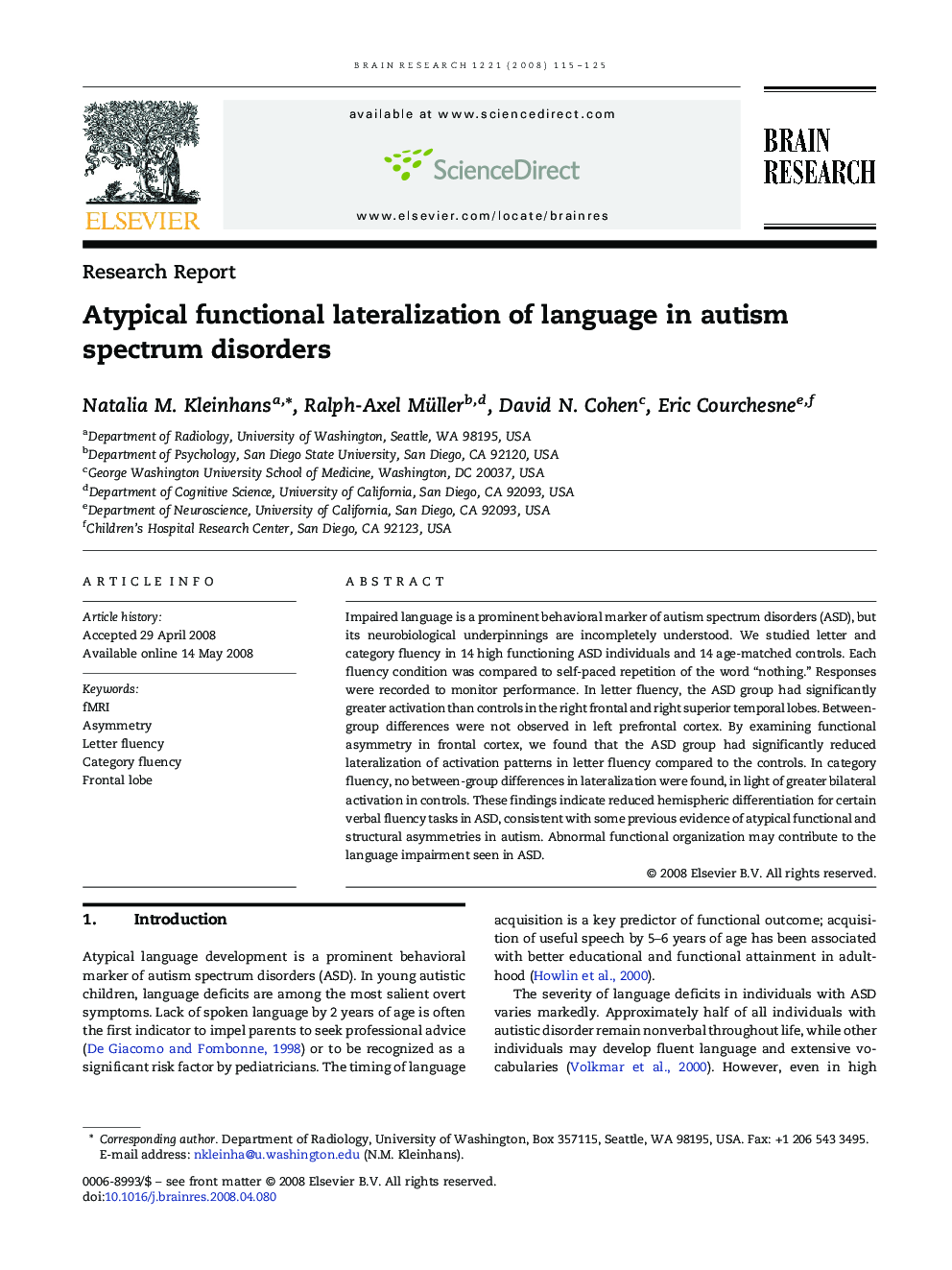| Article ID | Journal | Published Year | Pages | File Type |
|---|---|---|---|---|
| 4329505 | Brain Research | 2008 | 11 Pages |
Impaired language is a prominent behavioral marker of autism spectrum disorders (ASD), but its neurobiological underpinnings are incompletely understood. We studied letter and category fluency in 14 high functioning ASD individuals and 14 age-matched controls. Each fluency condition was compared to self-paced repetition of the word “nothing.” Responses were recorded to monitor performance. In letter fluency, the ASD group had significantly greater activation than controls in the right frontal and right superior temporal lobes. Between-group differences were not observed in left prefrontal cortex. By examining functional asymmetry in frontal cortex, we found that the ASD group had significantly reduced lateralization of activation patterns in letter fluency compared to the controls. In category fluency, no between-group differences in lateralization were found, in light of greater bilateral activation in controls. These findings indicate reduced hemispheric differentiation for certain verbal fluency tasks in ASD, consistent with some previous evidence of atypical functional and structural asymmetries in autism. Abnormal functional organization may contribute to the language impairment seen in ASD.
